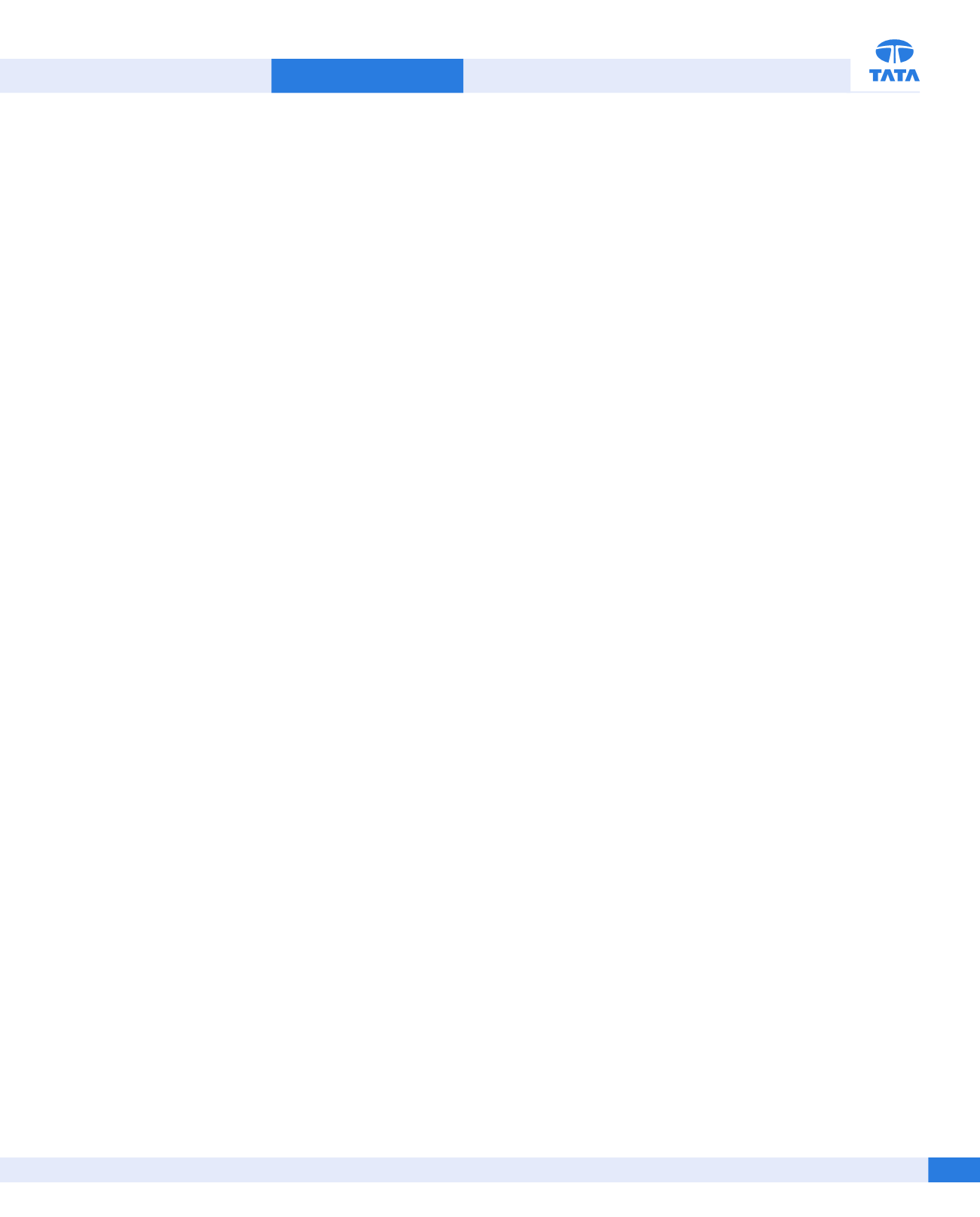

Notice
Board’s Report
Corporate Governance Report
Business Responsibility Report
Management Discussion & Analysis
123
A change in requirements under long-term supply arrangements
committing Jaguar Land Rover to purchase minimum or fixed
quantities of certain parts, or to pay a minimum amount to the
seller, could have a material adverse impact on the Company’s
financial condition or results of operations. The Company have
entered into a number of long-term supply contracts that require
Jaguar Land Rover to purchase a fixed quantity of parts to be used
in the production of Jaguar Land Rover vehicles (e.g., ‘‘take-or-pay’’
contracts). If the need for any of these parts were to lessen, Jaguar
Land Rover could still be required to purchase a specified quantity
of the part or pay a minimum amount to the seller pursuant to the
take-or-pay contract, which could have a substantial adverse effect
on the Company’s financial condition or results of operations.
Increases in input prices may have a material adverse effect on
the Company’s results of operations.
In Fiscal 2017 and 2016, the consumption of raw materials,
components and aggregates and purchase of products for sale
(including changes in inventory) constituted approximately 60.4%
and 58.8%, respectively, of the Company’s total revenues. Prices of
commodity items used in manufacturing automobiles, including
steel, aluminum, copper, zinc, rubber, platinum, palladium and
rhodium, have become increasingly volatile in recent years. Further
price movements would closely depend on the evolving economic
scenarios across the globe. While the Company continues to pursue
cost reduction initiatives, an increase in price of input materials
could severely impact the Company’s profitability to the extent
such increase cannot be absorbed by the market through price
increases and/or could have a negative impact on demand. In
addition, an increased price and supply risk could arise from the
need for rare and frequently sought-after raw materials for which
demand is high, such as rare earths, which are predominantly found
in China. Rare earth metal prices and supply remain uncertain. In
the past, China has limited the export of rare earths from time to
time. Due to intense price competition and the Company’s high
level of fixed costs, the Company may not be able to adequately
address changes in commodity prices even if they are foreseeable.
Increases in fuel costs also pose a significant challenge, especially in
the commercial and premium vehicle categories where increased
fuel prices have an impact on demand. If the Company is unable to
find substitutes for supplies of raw materials or pass price increases
on to customers, or to safeguard the supply of scarce raw materials,
the Company’s vehicle production, business, financial condition
and results of operations could be materially and adversely affected.
The Company manages these risks through the use of fixed
supply contracts with tenor upto 12 months and the use of
financial derivatives pursuant to a defined hedging policy. The
Company enters into a variety of foreign currency, interest rates
and commodity forward contracts and options to manage the
Company’s exposure to fluctuations in foreign exchange rates,
interest rates and commodity price risk. These financial exposures
are managed in accordance with the Company’s risk management
policies and procedures. The Company uses foreign currency
forward and option contracts to hedge risks associated with
foreign currency fluctuations relating to highly probable forecast
transactions. The Company also enters into interest rate swaps
and interest rate currency swap agreements, mainly to manage
exposure on the Company’s fixed rate or variable rate debt. The
Company further uses interest rate derivatives or currency swaps
to hedge exposure to exchange rate fluctuations on principal
and interest payments for borrowings denominated in foreign
currencies. Specific transactional risks include risks like liquidity
and pricing risks, interest rate and exchange rate fluctuation risks,
volatility risks, counterparty risks, settlement risks and gearing risks.
However, the hedging transactions may not adequately protect
the Company against these risks. In addition, if markets move
adversely, the Company may incur financial losses on such hedging
transactions, the financial condition and results of operations may
be adversely impacted.
The significant reliance of the Company and Jaguar Land Rover
on key markets increases the risk of the negative impact of
reduced customer demand in those countries.
The Company and Jaguar Land Rover, relies on the United
Kingdom, Chinese, North American and continental European
markets. Any decline in demand for the Company’s and Jaguar
Land Rover’s vehicles in these key markets may significantly impact
the Company’s business, growth prospects, financial position and
results of operations. Further, decreased demand for the Company’s
and Jaguar Land Rover’s products may not be sufficiently mitigated
by new product launches and expansion into growing markets,
which could have a significant adverse impact on the Company’s
financial performance.
The Company is exposed to liquidity risks.
The Company’s main sources of liquidity are cash generated from
operations, the existing notes, external debt in the form of factoring
discount facilities and other revolving credit facilities. However,
adverse changes in the global economic and financial environment
may result in lower consumer demand for vehicles, and prevailing
conditions in credit markets may adversely affect both consumer


















